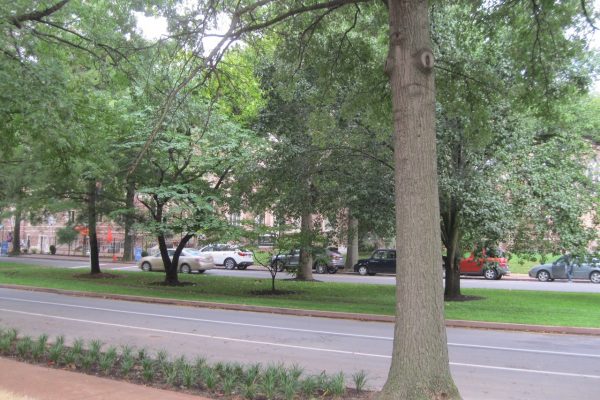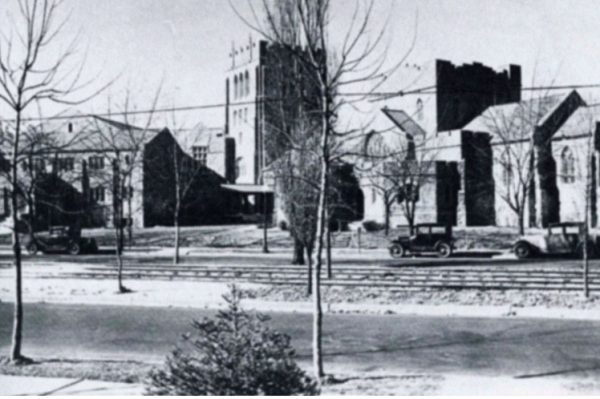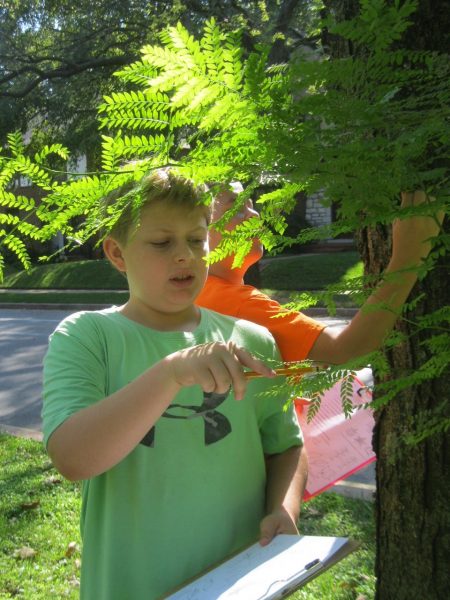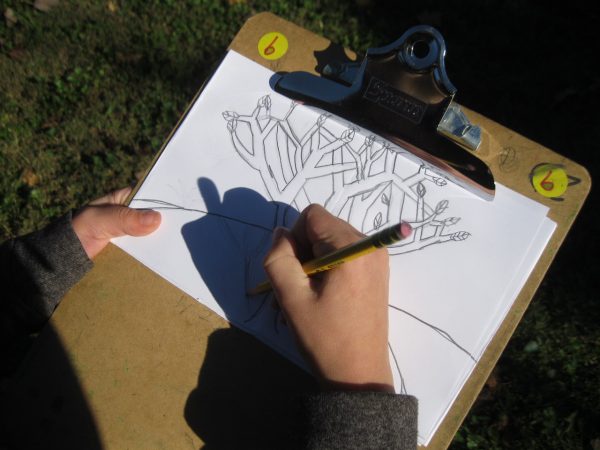Submitted by Jenny Morrison, Elementary Science Specialist at The St. Michael School of Clayton.
Last summer, I participated in LREC’s Place-Based Learning workshop, and it inspired me to again consider the many resources that surround our school.
I decided to begin the school year with a study of organisms that are in great abundance around our school: TREES!
In the spirit of place-based learning, I began by showing my third–sixth grade students a pair of “then & now” photos taken in front of our building. The students were fascinated by these photos, especially the historic one. When I asked them to spot differences between the photos, they noticed, among other things, the variation in tree size and cover. We then headed outside to investigate the trees in our neighborhood.
During the rest of the fall, we spent as much time outdoors studying trees as we did in the science classroom. We began visiting a nearby park, where each student chose his or her own tree to research and observe throughout the year. We have since visited this park many times, and it has truly become a favorite place of the students.
In the spring, teachers collaborated to plan a multi-disciplinary, culminating event for students at the park, one which incorporated studio arts, language arts, and performing arts. It included a two-point perspective drawing activity and even a “Mannequin Challenge,” in which students were asked to strike a pose that illustrated what they like to do most when we visit the space.
Being able to leave the classroom and connect with places in the surrounding neighborhood really made our tree project a memorable, meaningful, and authentic learning experience.



